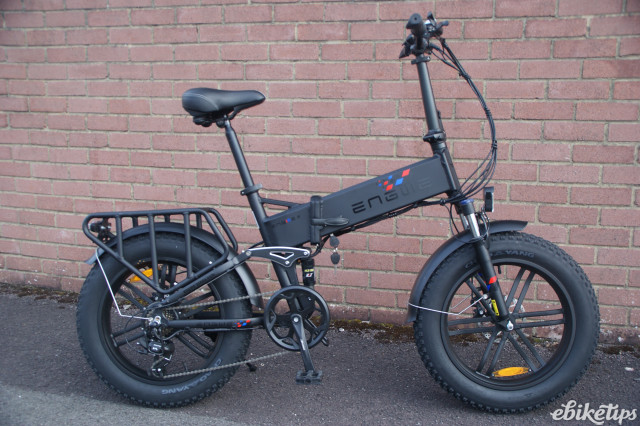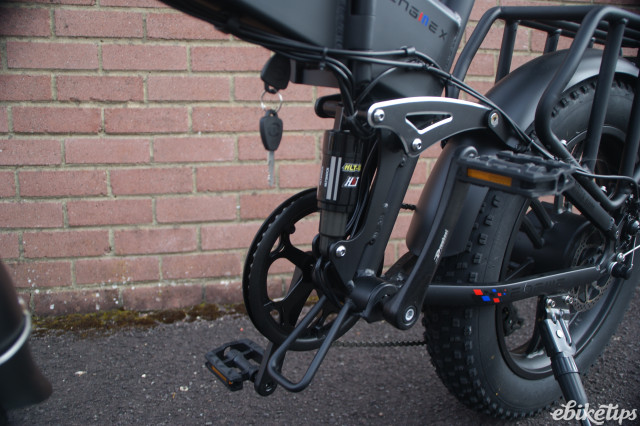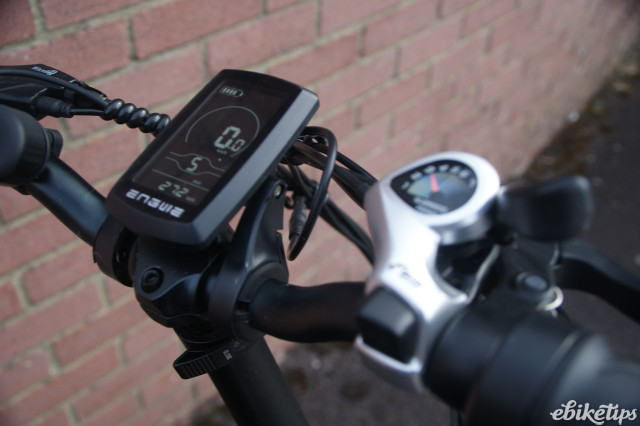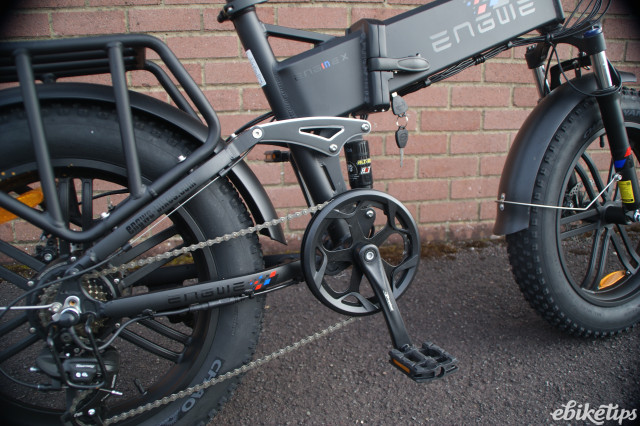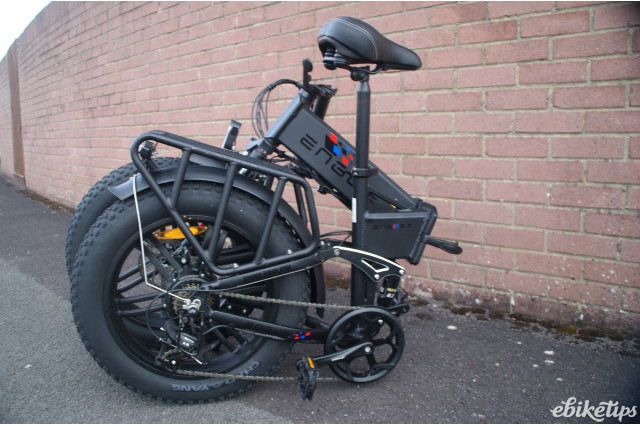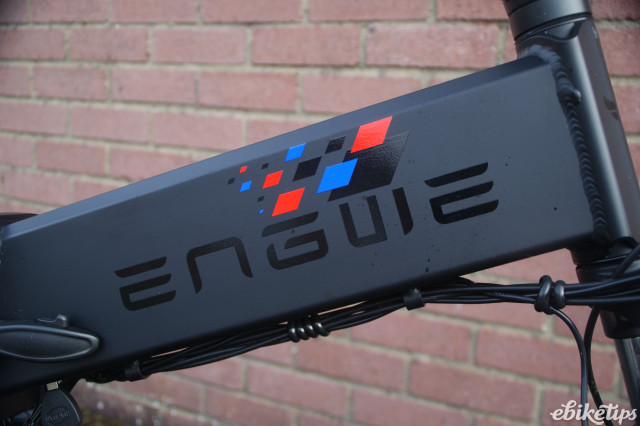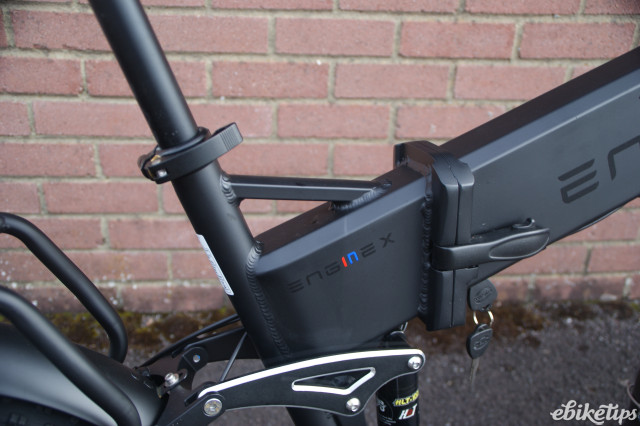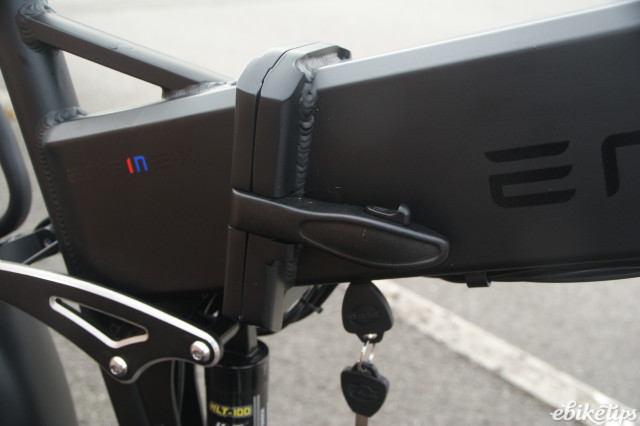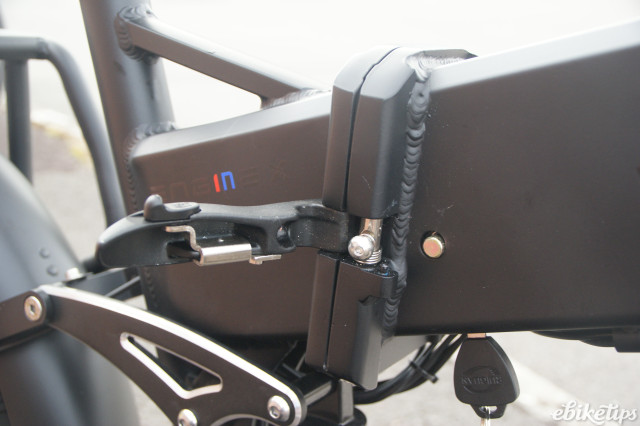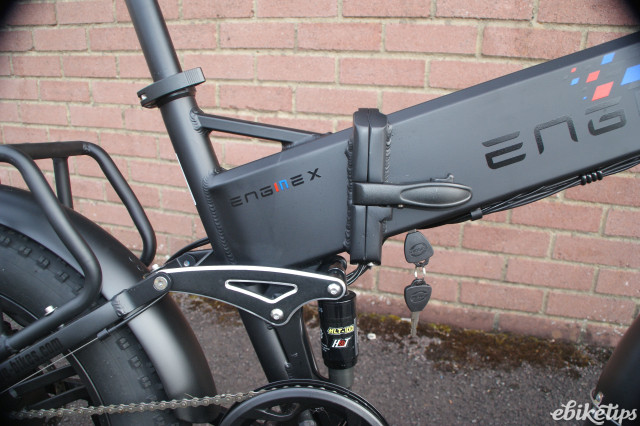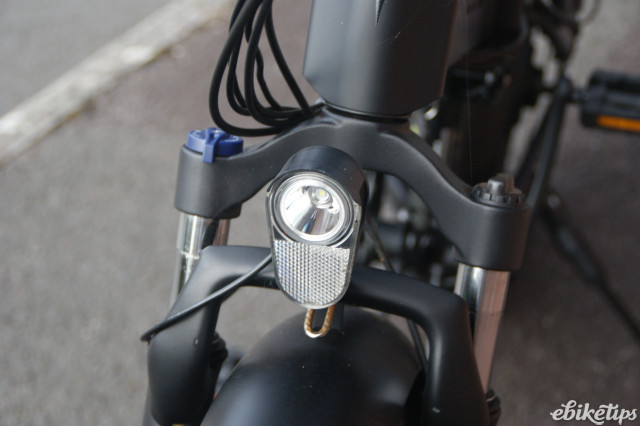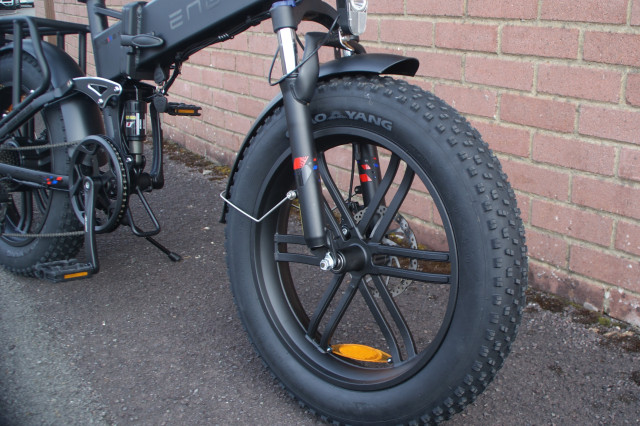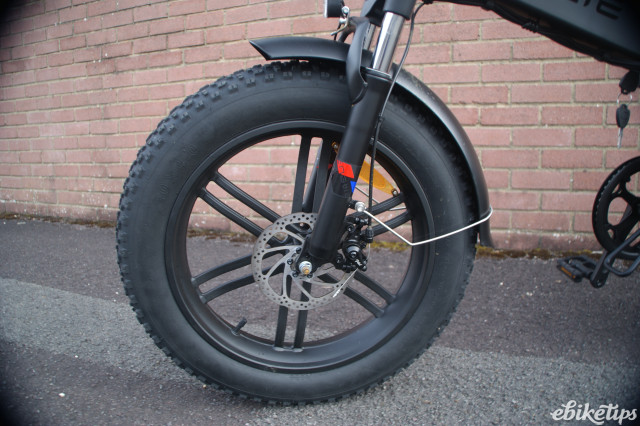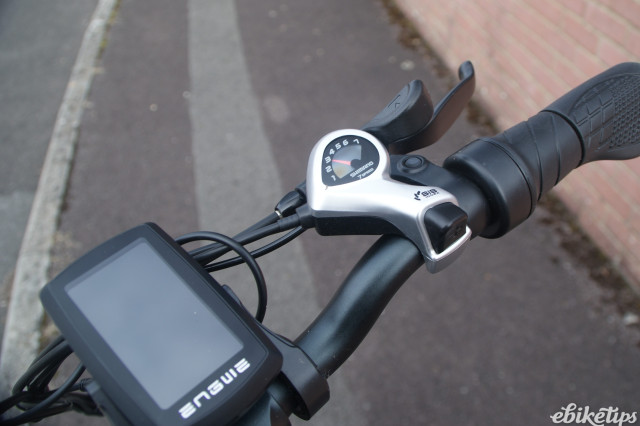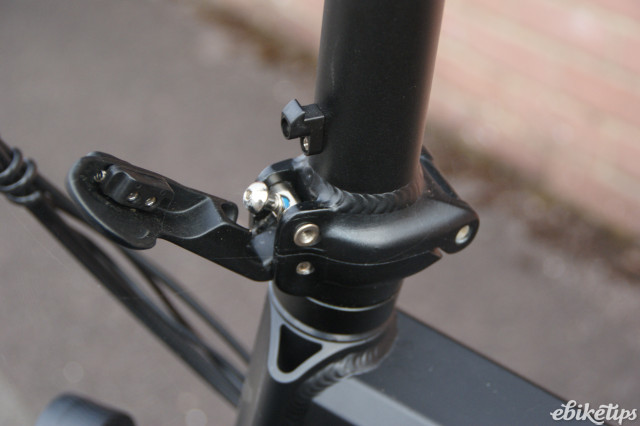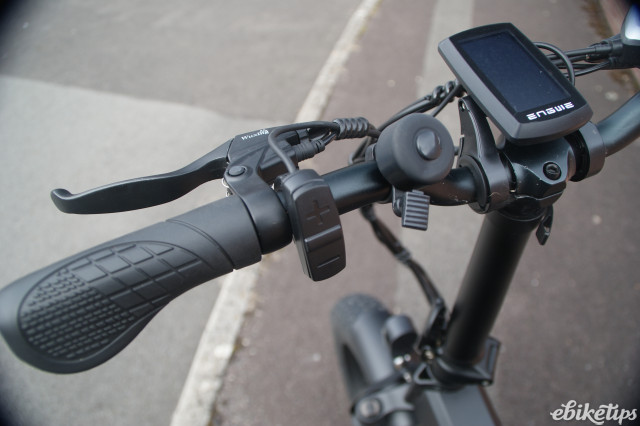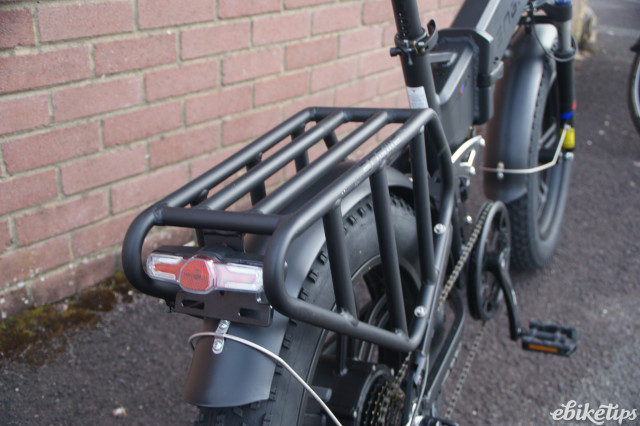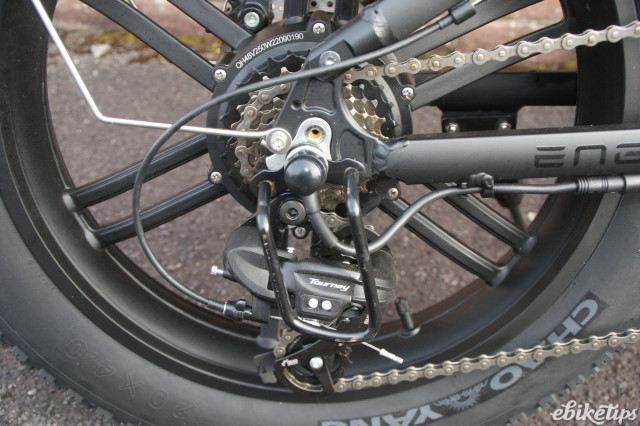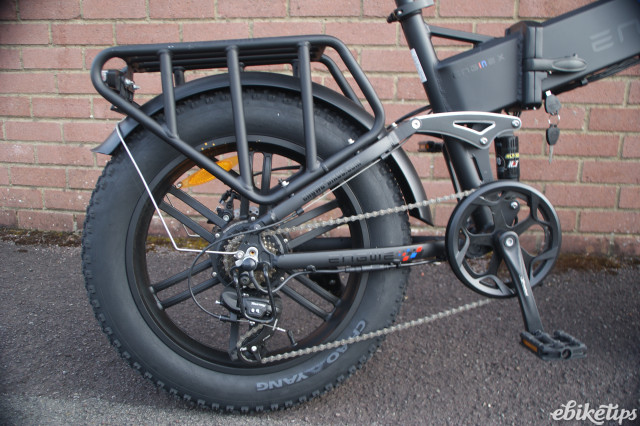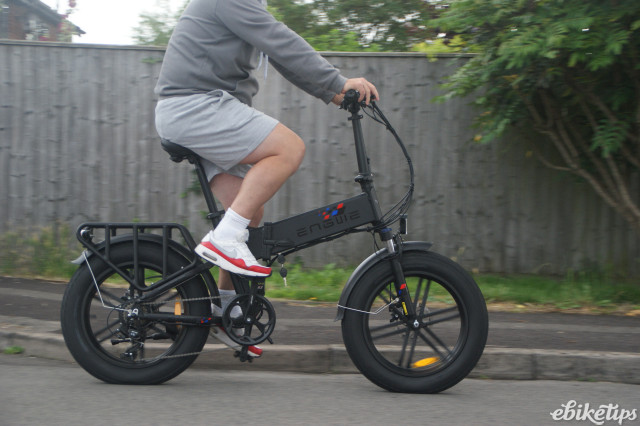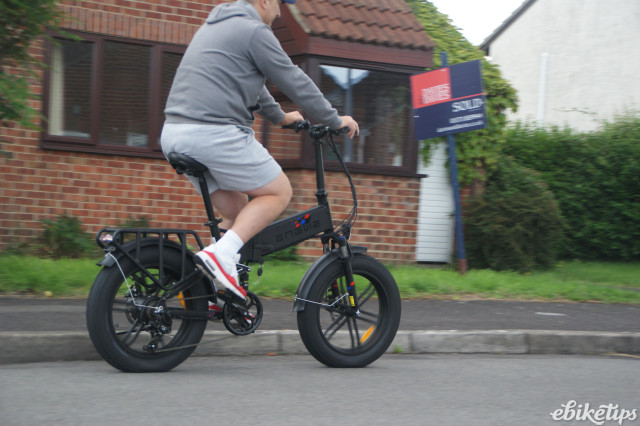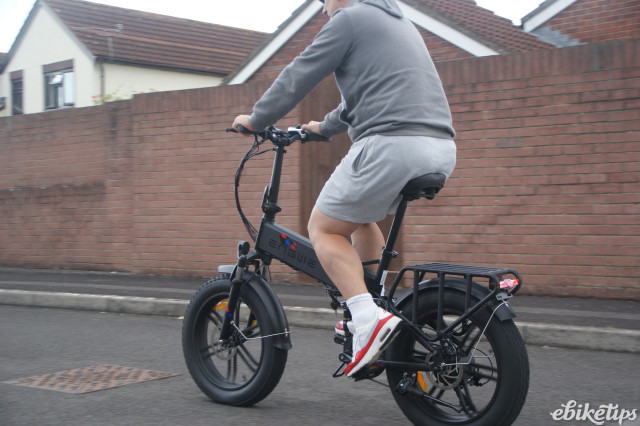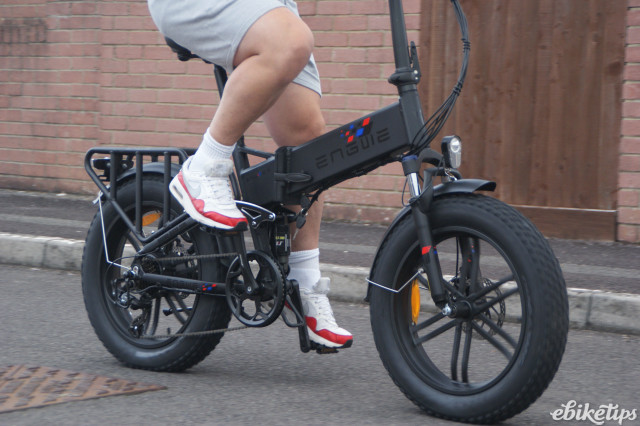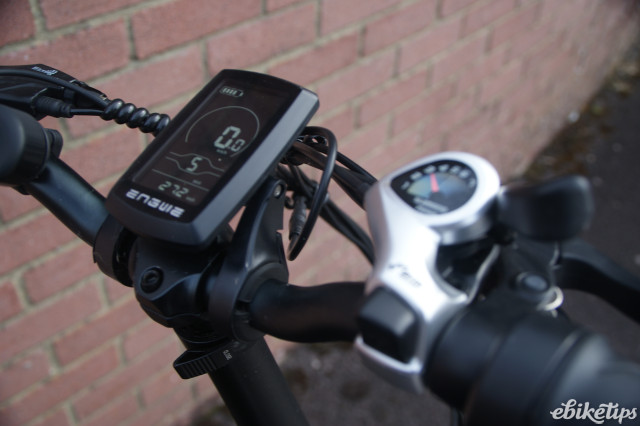Engwe Engine X
Overview
- Decent torque
- Suspension soaks the bumps up
- Weight affects the ride
- Motor system lacks finesse
With 4in wide tyres and full suspension, Engwe’s Engine X can happily tackle some rough terrain, so it’s not just for the urban dweller, while its pokey motor means that it’s a capable climber wherever you are. The ride position is very high though, which makes for tricky handling, and its overall weight makes it a tricky beast to live with at slow speeds, which limits your ability to get the most out of it.
Ride
I’m not going to beat around the bush here, the Engine X is a bit of a pig to ride and the majority of that is down to its weight which sits at just under 32kg.
When setting off it feels cumbersome, as there is a fair bit of lag (a good pedal revolution) before the motor kicks in, so if you are pulling away from the lights in traffic you are trying to get a very heavy bike off the line as quickly as you can which isn’t a pleasurable experience.
The motor system is quite primitive too. It’s got that on/off kind of feel to it rather than the smooth delivery of power and cut-off as you stop pedalling which you’ll find on more expensive systems from the likes of Bosch, Shimano etc. All this means that if you are starting and stopping a lot in a typical urban environment, the Engine X actually becomes quite tiring.
It’s also a pain to manoeuvre at speeds below 10km/h due to its weight. Slow turns into junctions or negotiating barriers on cycle paths make the Engwe want to flop over and if you are a lighter, smaller rider it can catch you out.
You can lower the power output of the motor to smooth things out at low speed, but then it cuts the overall top speed too, so you need to keep faffing with the power up and down buttons to scroll through the five levels on offer.
It’s a bit of a first world problem admittedly – it’s only pushing some buttons – but it’s another thing you can do without.
“It’s got fat tyres and full suspension though, so surely it’s natural habitat is the countryside?” I hear you cry. Well, yes, but it ain’t ‘all that’ there either, for exactly the same reasons – the weight and the motor.
The Engine X lacks the finesse needed for any kind of trail in the woods and the tall front end makes the steering twitchy even at cruising speed.
The suspension does soak up the bumps, so once you get out onto the wide-open fire tracks or onto the back lanes, comfort is pretty good – although I did find the saddle overly soft, causing numbness on longer rides.
Once you are able to let the Engwe stretch its legs and hit the 25km/h speed limiter, the weight becomes less of an issue, although the height of the handlebars still means that the handling isn’t as neutral and relaxed as it would be if you could lower them. The setup in the photos shows them at their lowest height.
From a ride point of view, the Engwe just doesn’t really tick any of the boxes for me. There are too many compromises, partly down to the Engine X trying to be an all-rounder. It’s a jack of all trades that’s definitely a master of none.
Motor system
As per UK law, the Engwe’s hub motor is limited to continuous rated power of 250W (with a maximum peak of 500W) and with 50Nm of torque on offer it’s pretty nippy. In the highest level of assistance you will be at the speed limiter very quickly and it’s got enough grunt to propel you up steep climbs without losing too much speed.
As I said earlier, the motor doesn’t have the smoothest action and it is quite noisy compared to some others with a noticeable whine.
The 624Wh battery is stored within the frame and it gives a decent enough range, though not exactly groundbreaking. On average I’d say I achieved around 50km/30 miles on rolling terrain while using the top level of assistance. If you are tackling any steep hills or lengthy drags you will burn through the battery quite quickly though.
You could go further using the lower power levels, but due to that overall weight the ride isn’t much fun without full assistance, and you definitely don’t want to be riding it without the motor turned on.
A full charge of the battery takes around five hours (about 25p in cost) using the included charger – one that has a built-in fan to keep things cool, which is a nice touch. The charge point is on the side of the frame and has a rubber cover for protection.
I’ve ridden the Engine X in heavy rain, and it has been parked outside the shops while it has been chucking it down with no ill effects, so I’d say the waterproofing is up to scratch.
To use the motor system, you need to turn the unit on using the key port under the main tube of the frame. Oddly though, you have to leave the key in it. It’s not a major issue as it can’t fall out, but it just looks a bit odd riding around with a key poking out of the bottom of the frame. It also means that you need to keep the key separate from others so that you don’t have a bunch of keys swinging around.
With everything powered up you can turn on the head unit which sits centre stage on your handlebar. You have a large speed dial in the middle, with the battery logo in the top left. Various ride data can be scrolled through at the bottom like odometer, average speed and max speed. A trip section is found just below the speed readout.
It would be great to see some kind of range calculation on it, but it’s not a deal breaker at this sort of price.
Everything is controlled via the rocker switch on the left-hand side of the handlebar, with plus and minus buttons to change the assistance level, a power button for the display, and another to turn the lights on. When the lights are on, the screen backlight is dimmed to reduce glare when riding in the dark.
The build
The Engine X’s frame is a chunky and robust beast, so it’ll stand up to whatever you throw at it. It definitely focuses on durability over aesthetics, that’s for sure. In fact, I’d go so far as to say it’s quite a primitive design with an average finish overall, and that is a theme that runs throughout the entire bike.
The gearing for instance is a Shimano 7-speed set up that uses a Tourney rear mech and a simple SIS thumb shifter that I was seeing on cheap mountain bikes back in the early nineties. It gets a basic 1x crankset too.
The gear shifting is okay but nowhere near as precise as that found on modern systems, and the range of ratios is fine when paired with the motor.
The brakes aren’t the best either. The Wuxing branded levers are linked to the unbranded disc calipers using traditional cables and there is quite a bit of flex and play in the system. Hauling on the brakes from the speed limit will see the Engwe pull up okay, but there isn’t a whole lot of modulation or finesse for controlling speed.
The wheels are of an interesting design with the spoked sections welded to the fat rim. They aren’t light, but they certainly don’t feel threatened by any kind of rough terrain. The 20in by 4in Chao Yang tyres soak up any harshness that the wheels may transmit, and the tread pattern copes with all kinds of terrain apart from very soft mud.
Other accessories include mudguards which offer decent coverage, a kickstand which is strong enough to hold the weight of the bike upright, and a strongly built rear rack.
Front and rear lights are included. Again, they are on the basic side but chuck out enough lumens to be seen by, with the front bright enough to see where you are going up to about 20km/h.
There is plenty of cabling going on too, which adds to the cluttered look of the bike.
Believe it or not, the Engine X is a folder. The frame folds in half mid-way along the main tube, and the handlebar folds down too. It doesn’t make it that compact and there is no latch or hook to keep the two folded sections together when you pick it up – if you can pick it up.
The size makes it ideal to get into the boot of your car, but you aren’t going to be lugging it on and off the train for the daily commute – well, unless you want to save on your gym membership.
From a rider height point of view there is only one frame size on offer which Engwe claims will suit those from 1.60m to 2.10m
Value and competition
Engwe have a UK website and warehouse which makes things easier from a purchasing point of view. The RRP is £1,149, although the bike is currently discounted to £1,049 – plus you can get another £50 off with the discount code on their site.
It’s certainly got value on its side, but then again you are paying for what you are getting when it comes to components etc.
There aren’t a huge number of fat tyred folding e-bikes around, so direct comparisons are quite tricky, especially when it comes to bikes that we have actually reviewed.
Cyrusher offer the Kommoda which is a step-through fat bike with a similar build kit. It’s not a folder though. It has a current price of £1,599.
If you want a 20” wheeled folder that can tackle hardpacked routes and roads I’d recommend the Estarli 20.7, a version of which I reviewed recently.
It doesn’t have suspension, but I used on byways, canal paths etc, and there is even a knobbly-tyred version called the 20.8. The 20.7 fully loaded with similar kit to the Engwe will set you back £1,350, but I found it to be very well built and a joy to ride even though the ride position is similar to the Engine X. Crucially, there isn’t the same weight to contend with.
Conclusion
Personally, I just don’t quite get the Engine X. I’m not quite sure who its design would benefit. It doesn’t really excel on any terrain due to the weight and the simplistic motor system, unless you can find yourself somewhere with quite straight trails or roads where you can cruise along. If you need to drive or catch the train to get to those places, you are going to be cussing that weight again.
It your budget is tight then the current £999 price is very appealing, but I’d suggest saving up a bit more if you can to open up your options, or try and find something that is more focused on the type of riding you want to do, rather than going for the Engwe which is trying to be good at most things.
2 comments
These ebike hub motors can be choppy with starting off some fiddling with UI settings and you can change the intensity and level of pedal assist mode, this helps to smooth out the ride. The real first world problem so to speak is not being able to set up ride profiles for ultimate lazy convenience 😉
Bought as a his & hers pair, because the Doctor told someone they need to take more exercise. Riden once or twice around the local streets / park because at 33kg it's way too heavy to lift into the boot of their car to 'go cycling' anywhere nicer like they thought they would. Consigned to the back of the shed thereafter because the thing's too heavy and too much ‘bloody hassle’ to use. Another potentially cyclist lost.
